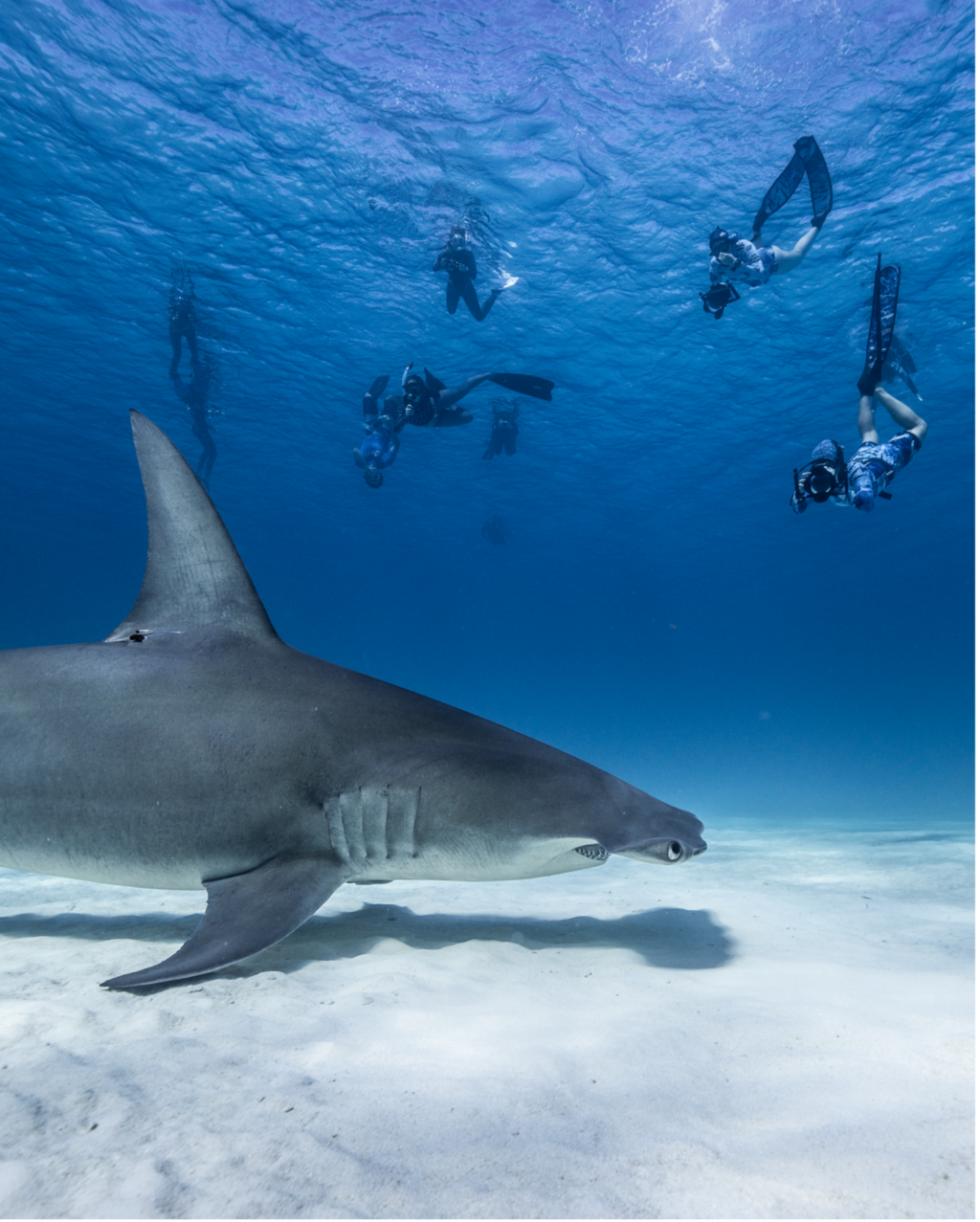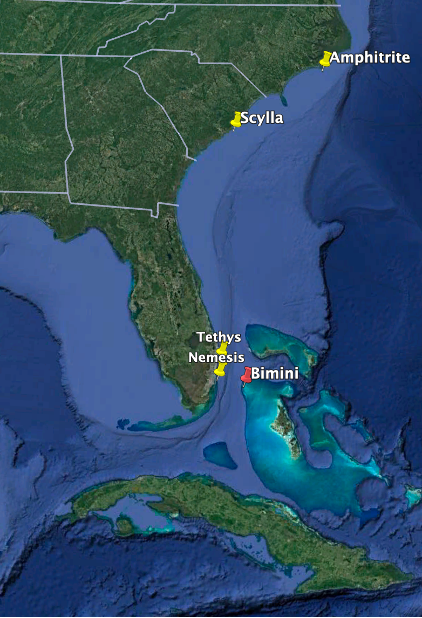The Missing Great Hammerheads of Bimini
Diving with the charismatic and iconic great hammerhead shark is special anywhere. However, combine these large sharks with the white sand and clear waters of The Bahamas, and the experience is truly magical. Over the last decade, the great hammerheads of Bimini have become world renowned amongst divers and featured in countless international documentaries. For four to six months each winter and spring, divers can reliably expect daily close encounters with multiple sharks. In past years, up to ten different individuals could be seen during a two hour dive, and up to twenty over the course of a season. However, in recent years, the number of individual sharks at the dive site has fallen, with only one to two seen on a typical daily dive. The reason for the decline in sharks is unknown, but is particularly concerning given that the species is listed as critically endangered by the International Union for the Conservation of Nature.

Great hammerhead at the dive site in Bimini, The Bahamas. Photo by Chelle Blais | © Bimini Biological Field Station
The Bimini Biological Field Station Foundation (aka Bimini Shark Lab) has been diving the great hammerheads in Bimini since the early 2000’s and studying them since 2010. The local provisioning dive site sits in 8 meters of water and is less than a kilometer off the shore of South Bimini. This area provides a unique opportunity to freedive and scuba with sharks on a daily basis. The Shark Lab has been visually identifying individual sharks based on fin notches, ventral patterns, and other long-term markers. Visual identifiers were first used to determine that some individuals were faithfully returning to Bimini each winter season and over multiple years. Some of these sharks could be expected at the site nearly daily. However, as the waters warm towards the end of each spring, the sharks become less common and apparently depart from the area. However, where they travelled to was not understood. Through the support of Save Our Seas Foundation, in 2015 the Shark Lab began tagging these sharks with internal acoustic transmitters to track their movements around Bimini and throughout the western North Atlantic region. Over the past eight years, movement data has shown there is significant connectivity of great hammerheads between Bimini and the Southeast USA, with individuals transiting between these areas each year. These movements present a conservation concern since the sharks are leaving the Bahamas Shark Sanctuary and are subject to both direct and indirect fishing efforts in the USA or international waters.

Shark Lab crew freedive with a great hammerhead in Bimini, The Bahamas, collecting photos for identification. Photo Chelle Blais | © Bimini Biological Field Station Foundation - SharkLab
In recent years, several of the most well-known great hammerheads have not returned to Bimini following their summer dispersals, and their whereabouts are unknown. For example, Scylla and Nemesis were two of the most recognizable and reliable sharks at the dive site since 2013, and Amphitrite, Medusa, and Tethys had been regulars since 2014. Unfortunately, none of these sharks have been seen since the 2020 and 2021 seasons. Detections from their acoustic transmitters show Amphitrite’s last location was in North Carolina in 2021, Scylla’s last detection in South Carolina in 2021, Nemesis’s last detection on the east coast of Florida in 2020, Tethys’ last detection in Florida in 2021, and Medusa has not been detected on any collaborative arrays since 2020.

Last known acoustic detection for great hammerheads tagged in Bimini, The Bahamas.
The loss of these well-known great hammerheads has not been offset with new individuals. Each season there are some new sharks that will pass by the dive site, be present for a day or two, and intermittently return. However, over the past two shark diving seasons the number of ‘regular’ great hammerheads frequenting the provisioning site in Bimini has fallen from more than ten to only three. This decline has significantly impacted the local ecotourism operations, which are instrumental to encouraging protective measures for sharks in the Bahamas. The shark diving industry is estimated to contribute more than $100 million USD to the Bahamas economy annually (Haas et al., 2017). Losses of large charismatic individuals has the potential to negatively impact the industry and livelihoods of those who depend upon it. With fewer individuals in the area, there has been increased pressure for dive crews to draw in the few sharks that remain. This includes longer durations of baiting and the potential that each individual shark receives more provisioned food at the dive site than if this was distributed across several sharks. These changes in provisioning efforts may have significant implications for the energetic acquisition needs of sharks and their motivation as large predators in the ecosystem.

A great hammerhead at the provisioning dive site in Bimini, The Bahamas. Photo Chelle Blais | © Bimini Biological Field Station Foundation - SharkLab
The decline in the number of individual great hammerheads around Bimini highlights the importance of continued research for these highly mobile species and the need for increased efforts of international conservation. It is still unknown if the absence of these individuals is a result of fishery-induced mortality or natural shifts in the movements of the sharks. However, given the expansive cooperative acoustic arrays in the region, the multi-year absence of data for these sharks is unsettling and a potential indicator of mortality. Ultimately, the reduced number of great hammerheads using the local waters around Bimini raises legitimate concerns for the longevity of the species. Significant research and management efforts are ongoing in the USA waters in order to limit the overall harvest of this species, reduce their interactions with fisheries, and support the long-term sustainability of the stock. Continued research from BBFSF will investigate shifts in long-term movements within the region and the role that abiotic factors, such as climatic shifts in water temperatures, may play in these movements. Fully protecting this species, and promoting the recovery of depleted stocks will require the engagement of multiple stakeholder groups and new approaches for conservation and management across jurisdictional bounds.
